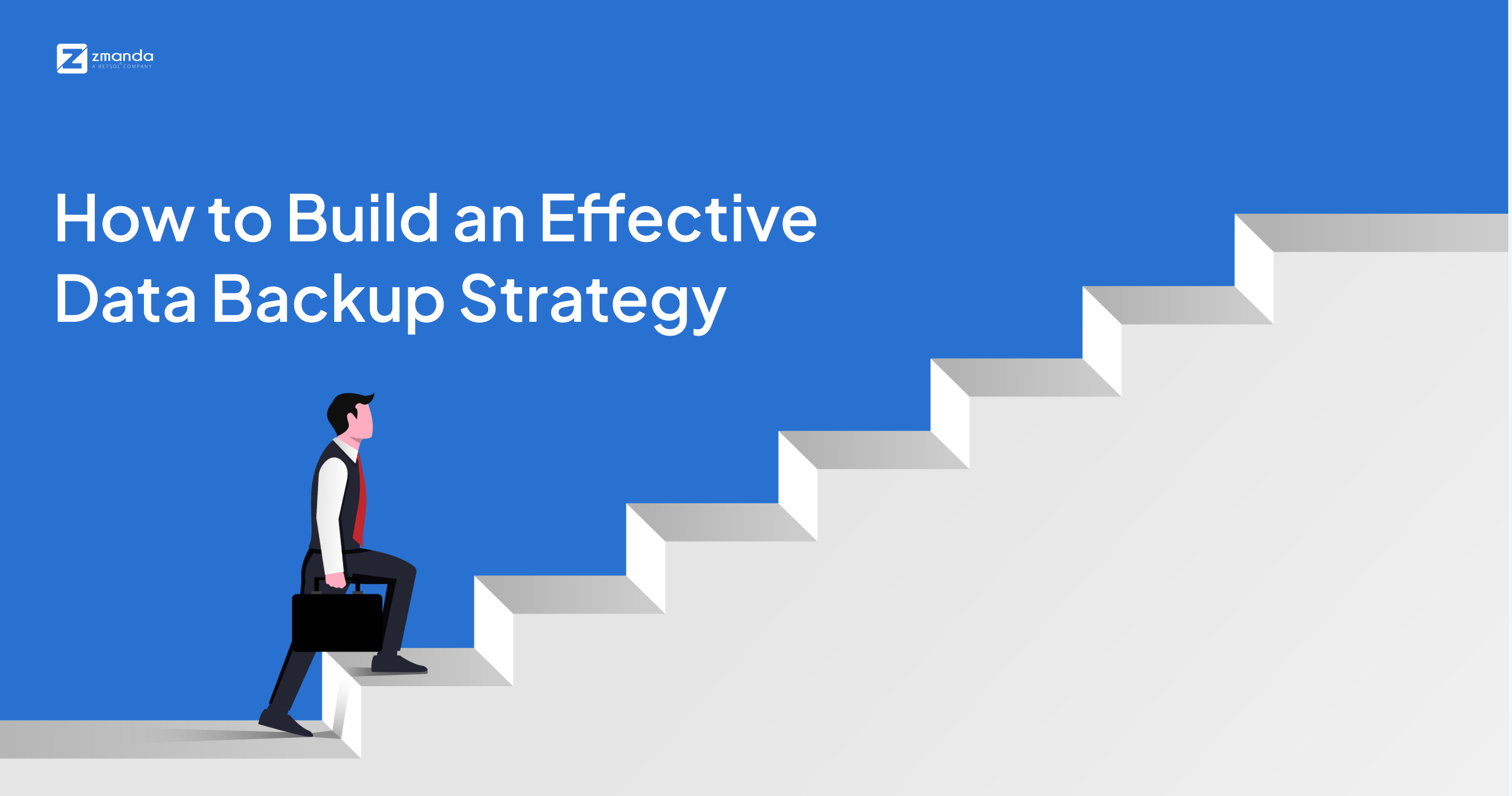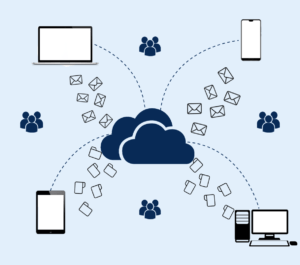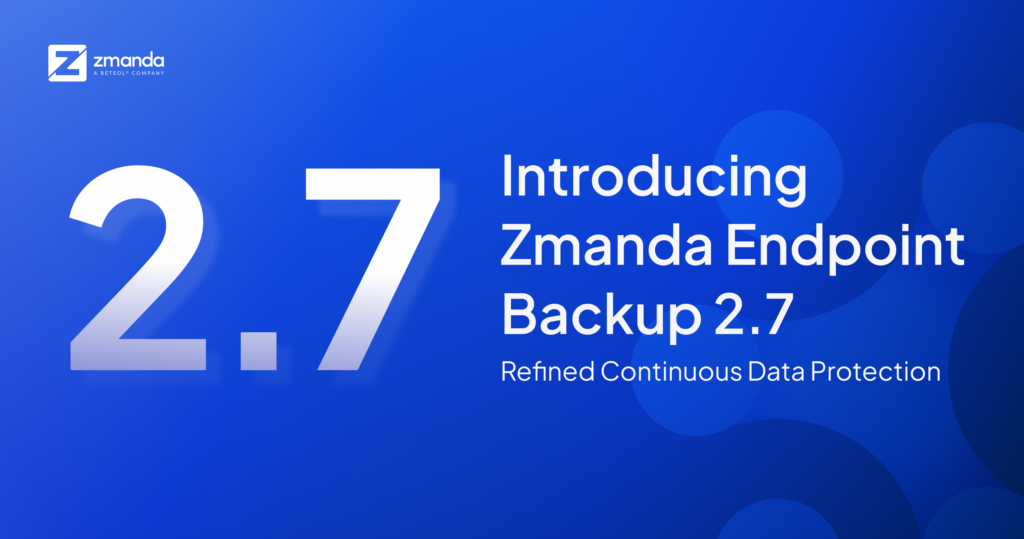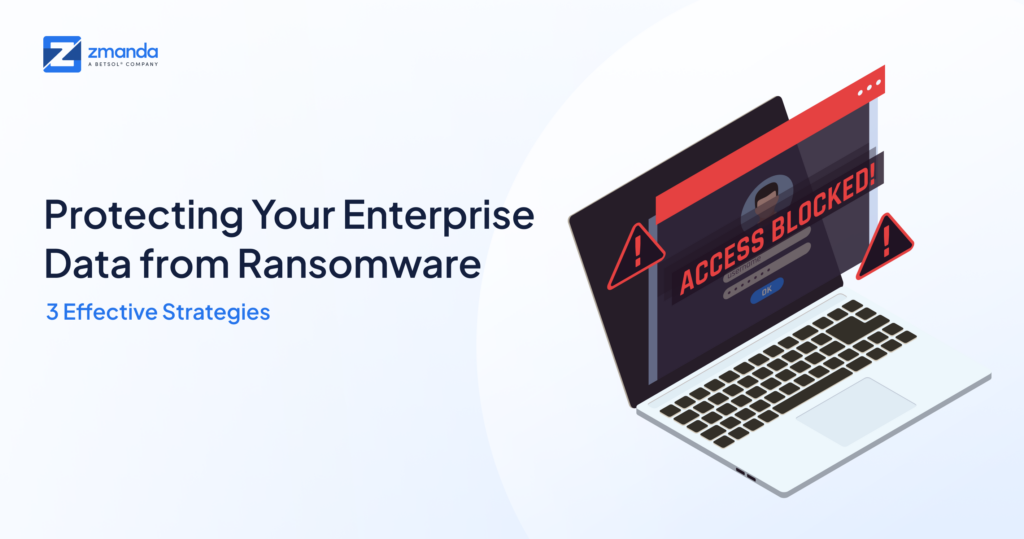
A solid data backup strategy is guaranteed insurance against unexpected data loss. Your organization can take a hit of data loss catastrophe because of natural disasters, data breaches, theft, viruses, and human error. Although data loss is unavoidable, building an effective data backup strategy can combat its effects.
This article will help you with steps to build a backup strategy for your organization and some best practices to make the built backup strategy airtight. So, let’s get started and first learn what a data backup strategy is.
What Is Data Backup Strategy?
Data backup strategy is a plan that outlines what, where, and how of backup. In brief, while planning a backup strategy, you should know what data you should back up, where you will store it, and how frequently the backup will take place. The restore process is also a part of the backup strategy.
When you have all this planned for your business, it becomes easy to get data back during unexpected failures. As data loss not only leads to losing vital customer data but also their trust in your organization. As per research, the global average cost per data breach amounted to 4.35 million U.S. dollars in 2022. So, to avoid such extravagance, it is important to build a data backup strategy
An effectively planned data backup strategy can save you from downtime and the possibility of losing your company's credibility.
Steps to Build an Effective Data Backup Strategy
1. Determine Organizational Backup Needs
A lack of knowledge about your business data can lead to an ineffective strategy for backup. It is vital to know which applications and data are to be prioritized. Which systems can be recovered at last? Which applications should be up and running in no time during downtime? Which data is crucial for business continuity? Answers to these questions can help you set the level of priority for your data, applications, and systems.
You can plan storage, security, and budget around your backup needs. Hence, determining backup needs should be your first step while planning the backup strategy.
2. Evaluate Storage Options
Once you determine the needs, the next step is to evaluate the storage options. You can opt for tapes, clouds, disks, or hybrid storage for your backup. The choice of storage depends on how frequently the data will be accessed.
You can opt for on-premises and off-premises storage for better accessibility when disaster strikes. Well, retrieving the data is the most crucial process during outages, and it majorly depends on your storage medium. Therefore, it is essential to evaluate the storage options accurately.
3. Decide Frequency and Scheduling
Frequency and time play important roles in backups. The last backup will be retrieved whenever the data loss event occurs. So, you should know how much data your business can lose when an unexpected event strikes. For example, some businesses can afford to lose a day’s data while others can only afford to lose only an hour’s data.
Deciding on frequency and scheduling has a lot to do with your RPO (Recovery Point Objective) and RTO (Recovery Time Objective). If you plan the scheduling and frequency in a better way, the data loss won't affect your business continuity.
4. Implementation
Once you choose the storage and decide on the frequency, it is time to implement your backup strategy. To implement the data backup strategy, you need to pick a vendor who can help you with all the aspects of your planned strategy.
Also, ensure the security feature is taken care of while deploying your backup strategy. A good vendor can ensure reliable backup, security, disaster recovery, and business continuity. So, ensure you opt for reliable data backup software during this step.
5. Create a Recovery Plan
The backup strategy is incomplete without a recovery plan. If you are not able to restore the backed-up data, the backup is of no use. Therefore, you need to outline how you plan to restore your data. It should have data replication, instant recovery, data protection, and restoration strategies to recover flawlessly during catastrophic events.
6. Test Your Data Backup Strategy
The last and most vital step in building an effective data backup strategy is to test it. Once everything is planned and implemented, you can test your final backup strategy by simulating outages. If your backup strategy does not work during outages, it makes no sense to have one. A backup strategy can be considered to be working: if
(a) it is tested regularly
(b) it can recover the protected data successfully.
As a practice, you should test your backup strategy every quarter.
Best Practices for Building Backup Strategy
Some of the best practices can help you in the long run with your data backup strategy. These practices ensure your business operations are not affected by unexpected data loss. It also keeps your strategies ready for catastrophic events.
-
It is essential to back up your staff’s email, and company-related data stored on their personal systems and mobile phones.
-
Prioritize the backup of crucial data.
-
Ensure that your data backup policies perfectly align with your business requirements.
-
Make sure the backed-up data is just not stored at one location. It is important to have multiple copies across geographical locations so that if a natural disaster strikes, you have data stored far from your office premises.
-
Define the RPO and RTO objectives accurately.
-
Protecting and safeguarding your backup is a must. Whether the backup is stored on tapes, disks, USBs, or the cloud, ensure it does not get into the wrong hands.
-
Test your backup strategy every quarter. Regular testing will ensure your backup and restore process is working under every circumstance.
Build Effective Data Backup Strategy with Zmanda
Zmanda can help you build a solid working data backup strategy for your enterprise. You can store your data on tapes, clouds, or disks with Zmanda. If you opt for a hybrid cloud environment, Zmanda can even take care of that.
Data replication, disaster recovery, data deduplication, business continuity, and much more can be offered by a single backup solution – Zmanda. The intelligent management method for scheduling ensures the same backup size for each backup run resulting in a consistent backup window.
Zmanda is known for its excellent support and our clients agree with that. Our team of experts will guide you on every path of your backup journey. Also, the quarterly releases assure you that your backup solution is up to date with current technology and trends.
You can leave your backup to us, and we will leave no stone unturned. So, get started by taking a free trial or requesting a demo. If you need customization for your business needs, get in touch with our support team and they will help you in every possible way.



